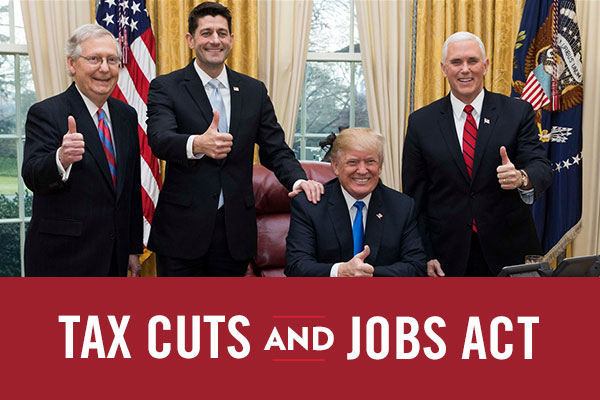The misconceptions partially driving public opinion of the Tax Cuts and Jobs Act (TCJA) are stubbornly persistent. Opponents of the tax reform have invented myth after myth to sour public perception of the commonsense idea that people should keep more of their hard-earned money.
These efforts have been successful. According to the Real Clear Politics polling average, 43 percent of respondents disapprove of the law, compared to just a 36 percent approval rating. However, this indicates a sizable percentage of the population is unfamiliar with the reform’s specifics, which may manifest itself in either neutrality or opposition to the law.
Yet, TCJA’s benefits are clear.
Analysis after analysis demonstrates working people of all income levels stand to gain from reducing the federal tax burden. For instance, Heritage Foundation recently estimated tax reform will increase the average American household’s take-home pay by $26,000 over the next 10 years. Additionally, most taxpayers in every single congressional district should expect a tax cut in 2018.
The Tax Foundation recently published an update to their state-by-state analysis of the TCJA’s jobs impact. They estimate entrepreneurs will add 215,000 full-time equivalent jobs in 2018—including nearly 8,700 in Pennsylvania—thanks to the new law. They’ve also analyzed the distributional impact of tax reform, finding individuals at all income levels will see their wages rise over the next 10 years.
While opponents of TCJA may acknowledge some benefits for people with low to modest incomes, they’ve criticized tax reform as disproportionately benefiting the rich. Of course, wealthier individuals will see a larger reduction in their tax bill because they pay more in taxes. Yet, as Chris Edwards of the Cato Institute points out, the middle class has actually seen the largest percentage cut of all income groups. In other words, the tax system is now more progressive. Whether that is a benefit of tax reform is another question.
Nevertheless, the reduction in the federal tax burden has been a net gain for the country. And it appears Congress isn’t finished. The House GOP has released tax reform 2.0, which includes making the tax cuts permanent for some earners. This latest development is encouraging and should be used as a catalyst for state-level tax reform right here in Pennsylvania.
RELATED : JOBS & ECONOMY, ECONOMY, TAXES & SPENDING, TAX REFORM





